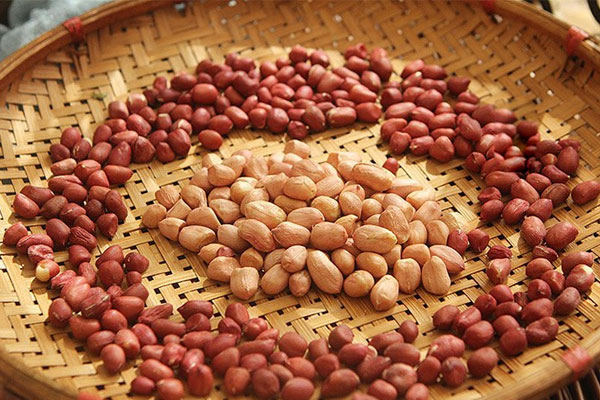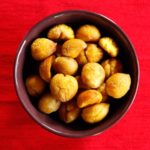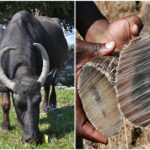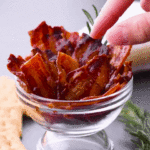Peanuts are a versatile ingredient used in various side dishes and condiments for family meals. When purchasing peanuts, you’ll typically find two types in the market: red and white. Many wonder if there are nutritional and consumption differences between the two. So, which one should you choose? Read on to find out and make an informed decision about which peanut is best for your culinary needs.

The shells of these two types of peanuts differ. White peanuts are larger and plumper. Red peanuts, on the other hand, are smaller, with bright red skins, and usually have two kernels per pod.
Both red and white peanuts are highly nutritious, but there are some differences in their nutritional profiles. Red peanuts are rich in iron, amino acids, and minerals, making them an excellent blood-boosting and energizing food. The red skin of these peanuts is particularly beneficial for blood health, so it’s best not to remove it. This type of peanut is especially recommended for women.
White peanuts, on the other hand, are abundant in unsaturated fatty acids and amino acids, including a higher calcium content. They are an excellent choice for the elderly and children.
White peanuts have a crispier texture when chewed, making them ideal for stir-fries, deep-frying, roasting, and snacks. They also have a higher oil content, which is why peanut oil (or peanut butter) is typically made from white peanuts.
Red peanuts have a subtle sweetness, especially when fresh, and can be used for making porridge, soups, or roasted as a snack, depending on your preference.
Each type of peanut has unique nutritional strengths, so choose the one that best suits your cooking needs. Buying the wrong type may result in a less-than-ideal dish, wasting these delicious nuts.
LEARN MORE ABOUT HOW TO MAKE SALTED ROASTED PEANUTS
Ingredients: 400g peanuts, 200ml cooking oil, 4g salt, 5ml white wine, 5g granulated sugar.
Instructions:
– Soak the peanuts in a bowl of clean water for 1 minute, then drain and thoroughly dry them. Note: During soaking, rub the peanuts with your hands to remove any impurities from their surface.
– Place the peanuts in a pan and roast over medium heat. Add 2ml of white wine and roast for 10 seconds. Now, add the cooking oil.
– Adding wine before the oil serves a specific purpose. As the wine evaporates, it absorbs excess water from the peanuts, reducing their moisture content and making them crispier. This helps prevent reabsorption of moisture from the air, keeping the peanuts crispy for about a week.
– Remember, before adding oil to roast the peanuts, don’t forget to add the wine first!
– Once the oil is hot, lower the heat and continue roasting for about 1 minute, or until the peanuts turn a light reddish-brown and become crispy. Then, turn off the heat.
– Add a little more wine and stir in one direction while the peanuts are still hot. As they start to cool, add salt and sugar, and mix well. Note: When roasting, maintain a low to medium heat. High heat can burn the peanuts. Once they turn reddish-brown, turn off the heat to avoid burning and bitterness.
Additionally, wait for the peanuts to cool completely before adding salt and sugar. If added while hot, the salt and sugar will melt, causing the peanuts to reabsorb moisture and become soggy within a few hours.
Source: PhunuVietNam
Easy Roasting and Peeling Steps for Hazelnuts
 Roasting and Peeling Steps for Hazelnuts’>
Roasting and Peeling Steps for Hazelnuts’>No need to break a sweat, because this technique allows you to quickly and effortlessly roast and peel nuts!


































